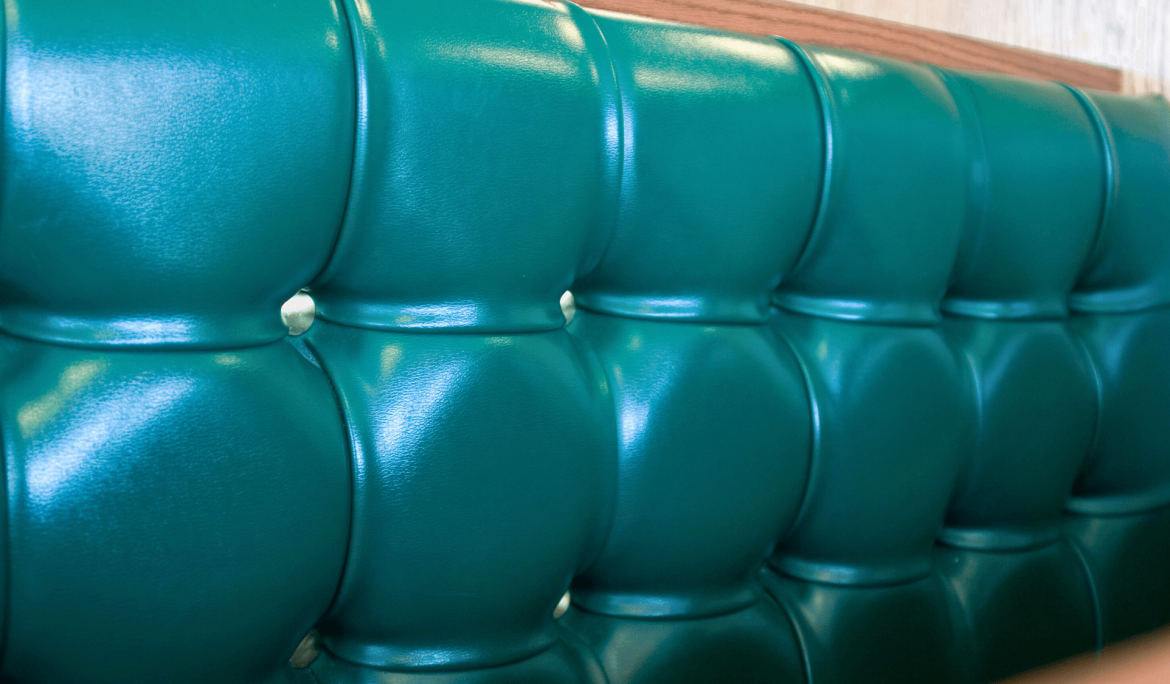A Guide to Booth Reupholstery and Top Upholstery Materials

In the competitive world of dining, the ambiance of a restaurant plays a pivotal role in shaping customer experiences. While the quality of food and service is paramount, the aesthetic appeal of your restaurant’s interior can significantly influence customer perceptions. One critical aspect of this is the condition of your restaurant booth furniture. Over time, even the most durable upholstery can wear out, leading to a tired and unkempt appearance. Reupholstering your restaurant booths not only refreshes the look of your establishment but also enhances comfort and functionality.
The Importance of Reupholstering Restaurant Booths
Restaurant booths are more than just seating arrangements; they are a part of the dining experience. Worn-out or damaged upholstery can detract from the overall ambiance, giving customers a negative impression of the establishment. Reupholstering offers a cost-effective way to revitalize your space without the need for complete furniture replacement. This process involves replacing the existing fabric or material with new, durable options that align with your restaurant’s aesthetic and functional needs. Reupholstering also allows for customization, giving you the opportunity to update your restaurant’s style to match current trends or to better reflect your brand’s identity. Whether you’re aiming for a modern, sleek look or a cozy, traditional feel, the right upholstery can make all the difference.
Steps in the Reupholstery Process
- Consultation and Planning: The reupholstery process begins with a consultation to assess your needs and preferences. This includes selecting materials, colors, and any design changes you might want. It’s essential to work with experienced professionals who can guide you through the options and help you make informed decisions.
- Material Selection: Choosing the right material is crucial. It should be durable enough to withstand heavy use and align with your restaurant’s style. Consider factors such as color schemes, texture, and ease of maintenance when making your selection.
- Execution: Skilled upholsterers will remove the old material, repair any structural issues, and apply the new upholstery, ensuring a high-quality finish. This step requires precision and attention to detail to ensure that the booths are both visually appealing and comfortable.
- Final Touches: Once the reupholstery is complete, the booths are inspected for quality and any necessary adjustments are made. This ensures that the final product meets your expectations and enhances the overall dining experience for your customers.
Top 5 Upholstery Materials for Restaurant Booths
Selecting the right upholstery material is essential for durability, maintenance, and aesthetics. Here are the top five materials to consider:
- Leather: Known for its luxurious feel and durability, leather is a popular choice for high-end restaurants. It is easy to clean and ages well, though it requires regular maintenance to prevent cracking. Leather adds a classic touch and can elevate the ambiance of any dining space.
- Vinyl: Vinyl is a cost-effective alternative to leather, offering similar aesthetics with easier maintenance. It is waterproof and available in various colors, making it ideal for busy establishments. Vinyl is particularly suitable for family-friendly restaurants where spills are common.
- Linen: Linen offers a natural texture and is known for its breathability. It is a great option for outdoor seating as it dries quickly and doesn’t get as hot as leather. Linen provides a casual, relaxed vibe, perfect for cafes and bistros.
- Velvet: Velvet provides a plush, luxurious look, perfect for creating a sophisticated ambiance. However, it can be challenging to clean and is best suited for low-traffic areas. Velvet is ideal for intimate dining settings where elegance is a priority.
- Leatherette: A synthetic alternative to leather, leatherette is low-maintenance and practical. It resists stains and odors, making it suitable for high-traffic environments. Leatherette offers the look of leather without the high cost, making it a popular choice for many restaurateurs.
Choosing the Right Material
When selecting upholstery materials, consider factors such as durability, maintenance, and aesthetic appeal. High-traffic restaurants should prioritize materials that are easy to clean and resistant to wear and tear, such as vinyl or leatherette. For a more upscale look, leather or velvet can add a touch of elegance, though they may require more upkeep. It’s also important to consider the overall theme and branding of your restaurant. The upholstery should complement the existing decor and contribute to a cohesive look. Additionally, consider the comfort of your patrons; materials that are too stiff or too soft can affect the dining experience.
Reupholstering your restaurant booths is an investment in the visual and functional appeal of your establishment. By choosing the right materials and working with experienced upholsterers, you can ensure that your restaurant not only looks inviting but also provides a comfortable dining experience for your guests. Whether you opt for the timeless elegance of leather or the practicality of vinyl, the right upholstery can transform your restaurant into a welcoming and stylish space. In conclusion, the decision to reupholster your restaurant booths should not be taken lightly. It requires careful consideration of materials, design, and functionality. However, the rewards are well worth the effort, as a refreshed interior can lead to increased customer satisfaction and, ultimately, greater success for your business.

